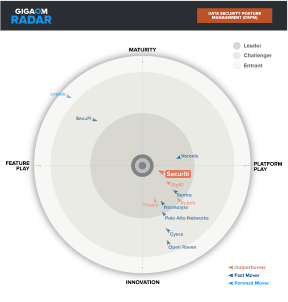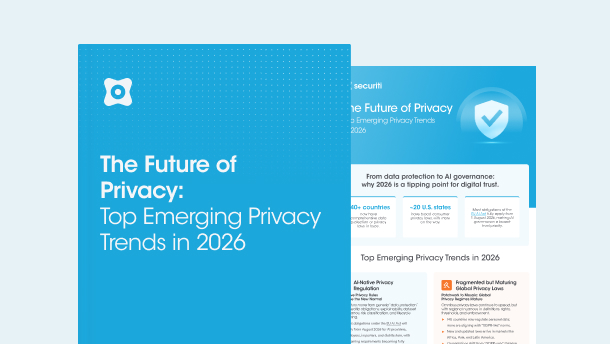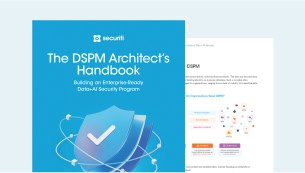Enterprises are working in an unprecedented volume of data, with individuals and organizations generating more than 400 million terabytes of data every day.
As data footprints escalate, so does the opportunity for cybercriminals, leading to an increase in data breaches and noncompliance costs. Consequently, data breaches are becoming more frequent worldwide, with a whopping 422.61 million data records being compromised in the third quarter of 2024.
Whether you're a small business or a leading corporate giant, comprehensive data security controls are no longer optional for enterprises. Additionally, implementing robust data security controls is a crucial requirement for a strong data security posture.
With the right data security posture management tool, organizations can adopt robust data security control measures to strengthen their digital footprint against growing cyber threats, save significant costs ($4.45 million as per IBM's 2023 Cost of a Data Breach Report, GDPR’s 20 million euros, or up to 4 % of total global turnover), and ensure compliance with evolving regulations.
What Are Data Security Controls?
Data security controls are specific mechanisms or requirements implemented to safeguard sensitive data and ensure compliance with regulations, standards, or best practices. These controls aim to secure sensitive data across on-premises, cloud, and hybrid environments from unauthorized access, exposure, alteration, or destruction.
With data security controls implemented, organizations can ensure confidentiality, integrity, and availability (CIA) of data — the foundational principles of data security. Confidentiality controls restrict access to information. Integrity controls ensure data completeness and correctness, and availability controls ensure data accessibility.
Simply put, data security controls are safeguards and checkpoints that ensure that only the right individuals have access to the allowed data and that the data is secure and correct throughout its entire lifespan.
6 Types of Data Security Controls
1. Operational Data Security Controls
Operational controls protect applications and systems. They consist of the rules and guidelines governing who is permitted to access IT resources. Examples include access lists for networking equipment, virtual machines, and PCs, as well as log reviews, management, etc.
2. Administrative Data Security Controls
Data is handled via administrative controls. These consist of the protocols and guidelines you establish for data security requirements. They outline data management procedures and the consequences of non-compliance. This control, in conjunction with the rest, ensures that your organization complies with laws like the GDPR. Administrative data security controls primarily focus on data governance, employee training, and data compliance.
3. Technical Data Security Controls
Technical controls are backend software and hardware-based controls that enforce the protection of systems and data. They consist of access controls and security tools such as encryption, firewalls, and intrusion detection.
4. Architectural Data Security Controls
Architectural controls govern the way systems are linked. They ensure that data flows securely across systems and networks while minimizing the risk of data exposure. These controls also identify vulnerable points so that necessary patches can be made, strengthening network security.
5. Response Data Security Controls
Security risks are always escalating, such as cybersecurity and data breach incidents. To respond to such incidents, you need response data security controls, which include incident response plans, containment measures, recovery plans, and reporting to individuals and regulatory authorities.
6. Visibility Data Security Controls
Visibility controls give you transparency into active threats. These tools monitor networks and systems and run intrusion detection systems to identify, monitor, and analyze threats in real time.
10 Best Practices for Implementing Data Security Controls
1. Data Classification
Data classification involves discovering, identifying, and categorizing data based on sensitivity (including regulatory obligations). It systematically organizes and categorizes data into distinct groups based on factors like sensitivity level, associated risks, applicable compliance regulations, and importance to an organization. It provides a comprehensive understanding of all data across the organization, including shadow data. With visibility into data assets, organizations can adjust controls accordingly.
2. Access Control
Access control is a system that manages and limits user access to network resources, data, or physical areas based on a predefined set of rules and policies, ensuring access or privileges to only authorized individuals. It can include password authentication, biometrics, access control lists, and role-based access control, which strengthen data security.
3. Data Encryption
Encryption is widely used to protect sensitive files, databases, accounts, etc. It is crucial for both data protection and ensuring that, in the event of a data breach, the data remains useless or unreadable. Several industry standards and data protection laws, such as the GDPR, NIST, HIPAA, GLBA, and PCI DSS, among others, also mandate data encryption to safeguard data from exposure or unauthorized access.
4. Data Masking
Data masking disguises a company's data, enabling it to leverage realistic datasets without exposing private and sensitive data to malicious actors. This technique utilizes modifying algorithms to alter the data's values while maintaining its original format, giving top-notch security without compromising data integrity.
5. Log Software and Hardware
Maintain a detailed inventory of software and hardware tools utilized to identify security flaws and vulnerabilities. Monitor and conduct periodic audits and risk assessments of tools utilized to gauge their operational efficiency.
6. Backup and Recovery
Ensure regular, secure backups of sensitive data. Backup data regularly to avoid data loss and destruction. Additionally, backup recovery should be tested regularly to ensure that backups can be used in case of data corruption or loss.
7. Risk and Vulnerability Assessments
Data risk assessments identify, monitor, and direct vulnerabilities, giving comprehensive visibility into potential risks associated with data assets. This enables organizations to direct resources appropriately and ensure data is secured across all data points.
8. Incident Response Plans
Part of data security is to have a well-defined incident response plan to address data breaches. As data breach incidents escalate, a thorough incident response plan is crucial to notify impacted individuals and the regulatory authority. Failure to respond within a given timeframe can lead to penalties under global data protection laws such as the GDPR, CPRA, etc.
9. Cloud Security
Data often resides on-premises, in the cloud, or in hybrid cloud environments. When choosing a cloud service provider, it’s crucial to ensure they offer robust security measures to protect data.
10. Security Awareness and Training
Security isn’t a one-time thing. It’s a continual process that involves being familiar with evolving concepts and threats that can impact your organization. As such, employees handling data must receive the necessary training on security best practices, identifying social engineering attacks, handling data safely, and other evolving threats.












































